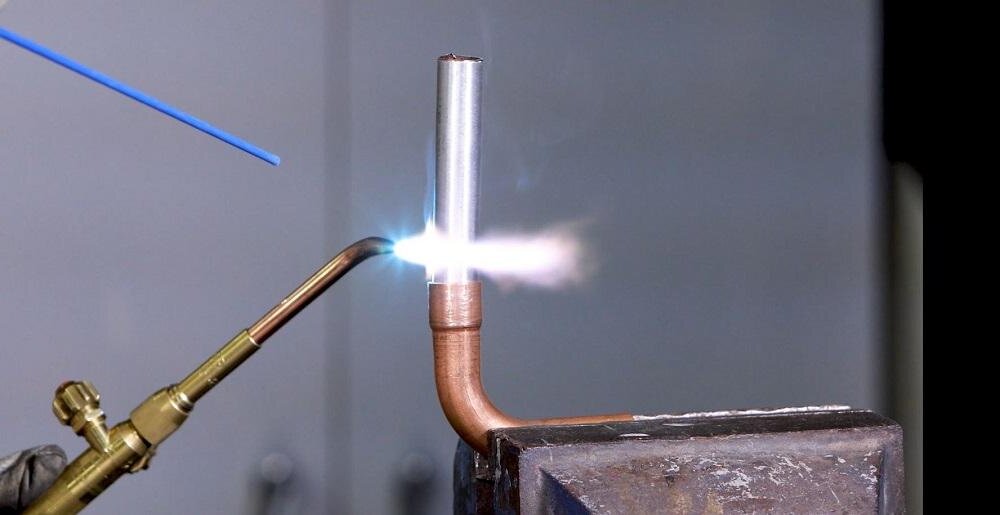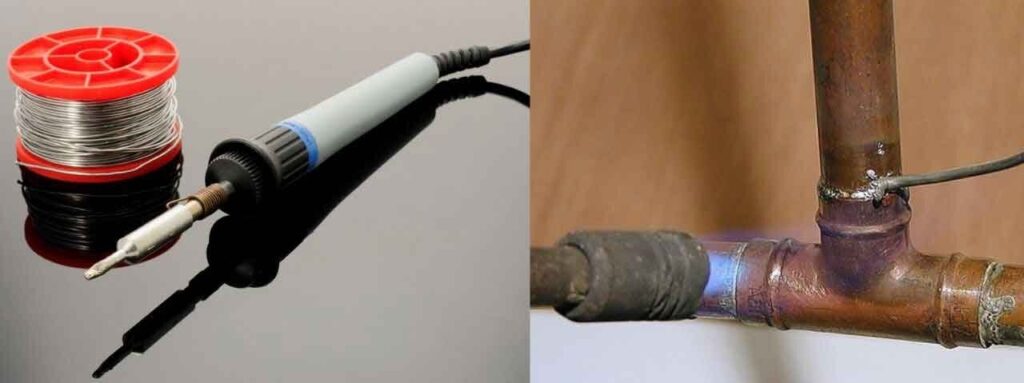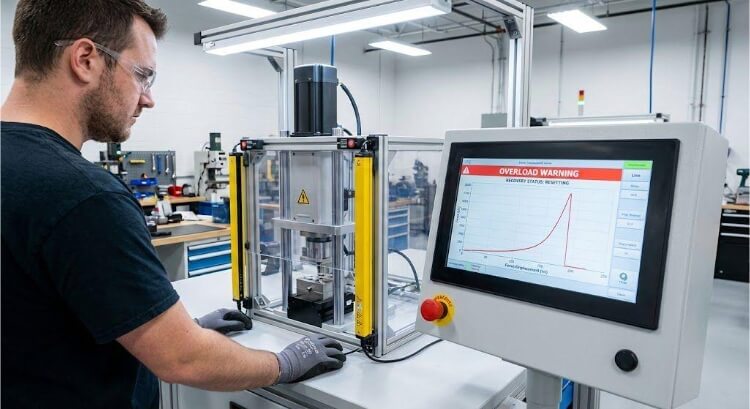Are you stuck deciding between brazing and welding for your next metal fabrication project? Both methods join metals but differ in strength, cost, and application. How do you decide which one suits your project best? Let’s break it down.
Brazing joins metals using a filler that melts above 840°F but stays below the base metals’ melting points. It does not dissolve the base metals, keeping them intact. Welding melts and fuses the metals, creating a strong bond. Brazing works well for thin, different, or heat-sensitive metals, while welding is better for high-strength and outdoor jobs.
Want to know which method will work best for your specific project needs? Let’s compare these two metal joining techniques to help you make the right choice.
Understanding Brazing
Brazing joins metals without melting the base materials, making it useful for many projects that need strong, clean connections.
What Is Brazing?
Brazing is a metal joining process that creates strong bonds without melting the base metals. Instead, a filler metal flows into the joint by capillary action.
The process works at temperatures above 840°F (450°C) but below the melting point of the joined metals. This key feature sets brazing apart from welding and soldering. The lower heat prevents warping while still creating durable bonds.
Brazing uses various heat sources, such as torches, furnaces, or induction coils. Each method has benefits for different projects and production volumes.
Brazing Process
The brazing process follows these basic steps:
- Clean the metal surfaces to remove dirt, oil, and oxides
- Apply flux to prevent new oxides from forming during heating
- Assemble the parts with proper joint clearance (typically 0.001″ to 0.005″)
- Apply heat to bring the assembly to brazing temperature
- Add filler metal, which melts and flows through the joint by capillary action
- Cool the assembly and clean off any remaining flux
The filler metal is key to successful brazing. It must have a lower melting point than the base metals but flow well at brazing temperatures. Common filler metals include copper, silver, and aluminum alloys, each with specific uses.
Types of Brazing Methods
Different brazing methods suit different projects based on size, material, and production volume.
Torch brazing
Torch brazing uses a hand-held flame to heat the joint area. It’s flexible and portable, and it’s good for repairs and small production runs.
Furnace brazing
Furnace brazing heats the entire assembly in a controlled environment. It works well for batch processing and complex parts with multiple joints.
Induction brazing
Induction brazing uses electromagnetic fields to heat the joint quickly and precisely. It’s fast, clean, and suitable for automated production.
Resistance brazing
Resistance brazing passes an electrical current through the joint to generate heat. It’s fast and works well for small, localized joints.
Advantages of Brazing
Brazing offers many benefits that make it the best choice for specific projects.
Lower temperatures and reduced thermal distortion
The lower temperatures used in brazing reduce thermal distortion in the base metals. This helps parts keep their shape and properties, which is vital for precision components.
Ability to join dissimilar metals
One significant benefit of brazing is joining different types of metals. You can connect copper to steel, stainless steel to aluminum, or many other combinations that would be hard or impossible to weld.
Cleaner and more precise joints
Brazed joints are often cleaner and more precise than welded ones. They show minimal heat effects and can look almost seamless, making brazing perfect for visible joints in consumer products.
Limitations of Brazing
Despite its benefits, brazing has some drawbacks to consider.
Lower joint strength compared to welding
Brazed joints typically aren’t as strong as welded joints, especially under direct tension. While still strong, they may not handle extreme loads as well as welds.
Limited high-temperature resistance
Brazed connections may weaken at high temperatures, especially when approaching the melting point of the filler metal. This limits their use in very hot environments.
Requirement for precise joint fit-up
Brazing requires a precise fit between parts. The gap must be small enough for capillary action but large enough for the filler metal to flow. Too tight or too loose gaps can cause weak or failed joints.

Understanding Welding
Welding creates strong metal bonds by melting and fusing materials at high temperatures. It’s a go-to method for heavy-duty projects.
What Is Welding?
Welding is a process that joins metals by melting and fusing them. Unlike brazing, welding melts the base metals along with any filler material.
The process creates a weld pool of molten metal that, once cooled, forms a strong bond. This fusion creates joints that can be as strong as the original metal. The high heat changes the structure of the metal in what’s called the heat-affected zone.
Welding works by applying intense heat to the joint area. The heat can come from an electric arc, a gas flame, a laser, friction, or other sources. Some welding methods also use pressure to help form the bond.
Welding Process
The basic welding process follows these steps:
- Clean the metal surfaces to remove contaminants
- Set up the parts in the correct position with proper joint preparation
- Apply heat to melt the base metals at the joint
- Add filler material if needed
- Allow the weld pool to cool and solidify
- Clean and inspect the finished weld
Heat is the main factor in welding. It must be intense enough to melt the base metals, which typically requires temperatures above 3000°F (1650°C).
Common Welding Techniques
The welding world includes many methods, each with specific uses and benefits.
Arc welding
Arc welding uses an electric arc to generate heat.
Common types include:
- MIG Welding: Easy to learn, great for steel and aluminum.
- TIG Welding: Precise and clean, ideal for thin or high-quality finishes.
- Stick welding: Versatile and works well outdoors or in rough conditions.
Resistance welding
Resistance welding passes electric current through the metal parts. The resistance to the current creates heat at the joint. Spot welding, a common type, is used in auto body shops and manufacturing.
Laser welding
Laser welding uses a focused laser beam to create precise, narrow welds. It is well-suited for thin materials and automated production, and the focused heat minimizes distortion.
Advantages of Welding
Welding offers key benefits that make it ideal for many applications.
Strong and durable joints
Welded joints are typically robust and durable. They can be as strong as the base metal and handle heavy loads.
Suitable for high-load applications
The strength of welded joints makes them suitable for high-stress uses. Bridges, buildings, and heavy machinery rely on welded connections to maintain safety under extreme conditions.
Wide range of material thickness compatibility
Welding works well on a wide range of metal thicknesses. Different welding methods can handle various sizes, from thin sheet metal to thick steel plates.
Limitations of Welding
Despite its strengths, welding has some drawbacks to consider.
High heat input can cause warping.
The high heat used in welding can cause warping, especially in thin materials. This distortion can be hard to control and may require extra work to fix or prevent.
Requires skilled labor
Most welding methods require skilled workers and special equipment. The learning curve is steeper than that of brazing, and good welds take practice.
Not ideal for thin or dissimilar metals
Welding works best when joining similar metals of similar thickness. It’s much harder to weld dissimilar metals or fragile materials without problems.

Key Differences Between Brazing and Welding
When choosing between brazing and welding, several key factors must be considered. Each method has clear strengths and weaknesses that make it better for specific uses.
Strength and Durability of Joints
Welding creates stronger bonds because it melts the base metals, fusing them. This makes welded joints ideal for high-stress or load-bearing applications.
While still strong, brazing relies on a filler metal and doesn’t melt the base materials, resulting in less robust joints.
Temperature and Heat Effects
Welding requires much higher temperatures, often melting the base metals. This can cause warping or damage to thin or heat-sensitive materials.
Brazing uses lower temperatures, reducing the risk of distortion and making it better for delicate parts.
Material Compatibility
Brazing works well with dissimilar metals, like joining copper to steel. It’s also suitable for thin or complex parts.
Welding is better for similar metals and thicker materials but struggles with dissimilar metals due to differences in melting points and thermal expansion.
Aesthetic and Precision Considerations
Brazing produces cleaner, smoother joints with minimal finishing work. It’s ideal for applications where appearance matters.
Welding can leave rough or uneven surfaces, requiring additional grinding or polishing.
Cost and Production Efficiency
Brazing is generally cheaper for small-scale or delicate projects due to lower energy use and more straightforward equipment.
Welding is more expensive and cost-effective for large-scale or heavy-duty applications where strength is critical.
Brazing vs. Welding: Factors to Consider
Choosing between brazing and welding can make or break your project. Several key factors will help you decide which method best suits your needs.
Application and performance requirements
Think about how the joint will be used. Will it face high stress, extreme temperatures, or vibration? Welded joints handle direct tension better, while brazed joints often do better with vibration.
Check if the joint needs to be water or gas-tight. Both methods can create sealed joints, but the application matters. Brazed joints work well for plumbing and refrigeration, while welded joints may be better for high-pressure vessels.
Consider the working environment, too. Will the joint be exposed to chemicals, salt water, or extreme temperatures? Some brazed joints may weaken at high temperatures, while welded joints might have better corrosion resistance.
Material type and thickness
The materials you’re joining often determine the best method. Thin materials under 1/16″ thick generally do better with brazing to avoid burn-through and warping.
Brazing is usually the only viable option for dissimilar metals like copper to steel or aluminum to stainless steel. Welding these combinations is difficult or impossible.
Very thick materials typically favor welding, which creates a complete fusion bond that can handle heavy loads. The higher heat of welding penetrates thick sections better.
Production volume and cost constraints
Consider the equipment you already have for one-off projects or small runs. Brazing often requires less expensive tools, while welding might require more specialized equipment.
In high-volume production, speed becomes key. Some welding methods, like MIG, can be speedy. Furnace brazing can be efficient for batch processing many small parts at once.
Remember labor costs. Welding generally requires more skilled labor, especially for complex joints, which can significantly impact your total project cost.

Brazing vs. Welding: Common Uses
Both brazing and welding have specific applications where they shine. Understanding typical use cases can help you make better decisions for your projects.
Best Use Cases for Brazing
- HVAC systems and plumbing: Brazing is ideal for joining copper pipes and other components.
- Aerospace and automotive applications: It works well for lightweight, precision parts.
- Electrical components and delicate assemblies: Brazing’s lower heat input prevents damage to sensitive materials.
Best Use Cases for Welding
- Structural and heavy-duty applications: Welding strengthens buildings, bridges, and machinery.
- Fabrication of industrial machinery: It’s perfect for creating durable, load-bearing parts.
- Repair and reinforcement work: Welding is often used to fix or strengthen existing structures.
Conclusion
Brazing and welding are effective methods for joining metals but serve different purposes. Choosing between brazing and welding depends on your project’s needs. Consider material type, joint strength, production volume, and budget.
Ready to start your next metal fabrication project but still unsure which joining method is right for you? Our experienced engineering team can help evaluate your requirements and recommend the best approach. Contact us today for a free consultation and quote.
Hey, I'm Kevin Lee

For the past 10 years, I’ve been immersed in various forms of sheet metal fabrication, sharing cool insights here from my experiences across diverse workshops.
Get in touch

Kevin Lee
I have over ten years of professional experience in sheet metal fabrication, specializing in laser cutting, bending, welding, and surface treatment techniques. As the Technical Director at Shengen, I am committed to solving complex manufacturing challenges and driving innovation and quality in each project.




